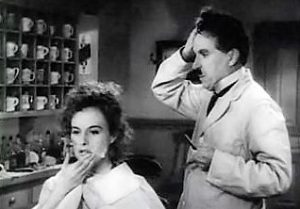Satire
In literary genre history and its rhetorical resources, satire has an important place, since many classic and modern authors have used it to give a humor and irony touch to the story they are telling.
What is satire?
Satire is a literary resource characterized by the use of sarcasm with a playful, burlesque or moralistic intent in relation to a character or situation. From a psychological point of view, satire is part of human behavior, which seeks to make fun of someone or something, which became a literary genre when it became part of written language. According to specialists in satire field, its origins go back to Iambic poetry in the 7th century B.C. in Greece, until it was expanded by other expression elements such as plastic arts and audiovisuals.
Many specialists place their literary origin in Ancient Greece, and they have studied how this resource has been used by many recognized writers in different literary genres, graphic and audiovisual media to give a humorous and reflective nature to the messages transmitted.
History of the satire
Satire’s history in literature dates back to Greek Iambic poetry in the 7th century B.C. Semons of Amorgos, Aristophanes and Arquiloco de Paros developed satire in this Ancient Greek period.
Later on, it was developed by other Latin authors such as Horacio, Lucilio, Luciano de Samosata, Juvenal, Seneca, Marcial, among others.
In the Middle Ages and in successive historical periods, satire has gone through all literary genres (novel, poetry, short stories, theatre, essays) and in different types of texts, such as narrative, descriptive, opinion, among others.
Making use of irony, sarcasm, exaggeration and ridicule, satire has managed to transmit its message against what it criticizes, by giving a humorous touch to its message.
Among the most representative authors and works of universal literature we can cite a: Miguel de Cervantes with the novel “Don Quixote de la Macha”, Francisco de Quevedo with poems such as “Powerful Knights is Money”, Giovanni Boccaccio with the “Decameron”, “Gulliver’s Journeys” by Jonathan Swifi, George Orwell with “Rebellion on the Farm”, among others.
Characteristics of the satire
- Born in ancient Greece.
- It is expressed in prose or verse.
- It uses humor to make fun of the imperfections of a thing or a person.
- Expresses indignation.
- Uses irony, parody and sarcasm.
- The characters are flesh and blood.
- It has a moral background.
- It makes use of comparisons of two juxtaposed or opposite facts, to give value to one and to devalue the other.
- Exaggeration or hyperbole to make a real situation, somewhat exaggerated to the point of being ridiculous.
Among the most outstanding authors we can mention the following, making the observation that there are thousands in world literature:
- In Ancient Age ( Greco-Roman):
- Luciano of Samosata
- Horatio
- Seneca
- Lucil
- Middle Ages and Renaissance:
- Juan Ruiz
- Miguel de Cervantes
- Luis de Góngora
- Francisco de Quevedo
- Lope de Vega
- Giovanni Boccaccio
- Voltaire
- Juana Inés de la Cruz.
- Jonathan Swif
- Alexander Pope
- Charles Dickens
- Modern Age:
- Jorge Luis Borges
- Charles Chaplin
- Marl Twin
- George Orwell
- Groucho Marx
- Woody Allen
Examples of satire
“Mighty Knight is Money” by Francisco de Quevedo
An example of a satire work in Spanish is the poem by the writer Francisco de Quevedo titled ” Powerful Knight is Mr. Money”. In this fragment some elements that characterize satire can be identified: verse, indignation, humor with hyperbole and social criticism.
“Mother, I humble myself to gold,
He is my lover and my beloved,
For pure in love
It’s continuous yellow.
That then double or single
He does everything I want,
Mighty gentleman
It’s Mr. Money.
Born in the honest Indies,
Where the world accompanies him;
He comes to die in Spain,
And it’s in Genoa buried.
And so whoever brings him to the side
It’s beautiful, even if it’s fierce,
Mighty gentleman
It’s Mr. Money.”
“The Great Dictator” by Charles Chaplin
This world-renowned film by actor and director Charles Chaplin is an example of satire in cinema and its impact on viewers.
The great dictator, a 1940 film, won five Oscar nominations that year. In the story, Chaplin makes a parody imitating the appearance and gestures of German leader Adolf Hitler to make fun of him and show the absurdity and nefariousness of Nazi ideas. Like other literary genres, Chaplin’s satire does not escape key elements such as humor, ridicule, and social criticism.
How to cite this article?
Briceño V., Gabriela. (2019). Satire. Recovered on 24 February, 2024, de Euston96: https://www.euston96.com/en/satire/










